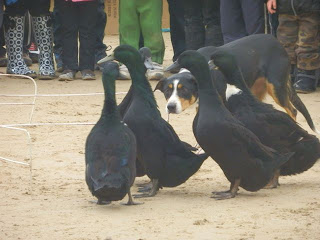I'm having a little sewing break at the moment (hope it doesn't turn into a long one LOL) This scarf and hood is knitted from
Drops pattern 109-56. The knitting pattern requires you to use a super chunky wool, which you knit up on size 10 knitting needles. The you change to 12mm knitting needles for beginning of the scarf. If you are keen to knit this hoody/scarf you can access the
pattern here. It took me a while to work it out as I like knitting instructions to be very specific, or more visual...I got there in the end though!
This is an adult pattern and it's made to fit an adult although I have a child is modelling my effort. I've got a thing for red this winter.....I've also just finished some wrist warmers in red which are kinda cute (for me this time).
Wool used: Moda Vera Shiver 100% acrylic
Knitting Needles: 9mm & 10mm
Did I have problems with the pattern?
Yes I did....it was all my own doing by not using the wool to the pattern or doubling the thread. Plus I don't do tension guages...I'm knitting in acrylic too so I changed the pattern slightly to fit.
For the Hood: I cast on 58 stitches and used size 9 needles.
For the scarf: I cast on 20 stitches and used a size 10 needle, then changed back to 9 when attaching the hood
For the back seam: I used a 3 needle bind of. The bind off seam was shown on the inside of the hood
Would I knit this pattern again? Yes....because it was an easy pattern once you worked out the fit. Next time though I would use 100% wool, mainly because I prefer knitting in wool and it is much warmer fibre...
 |
I had a reluctant model and in the end this
one charged a fee to pose....Very wise child,
holiday pocket money solved! |









































